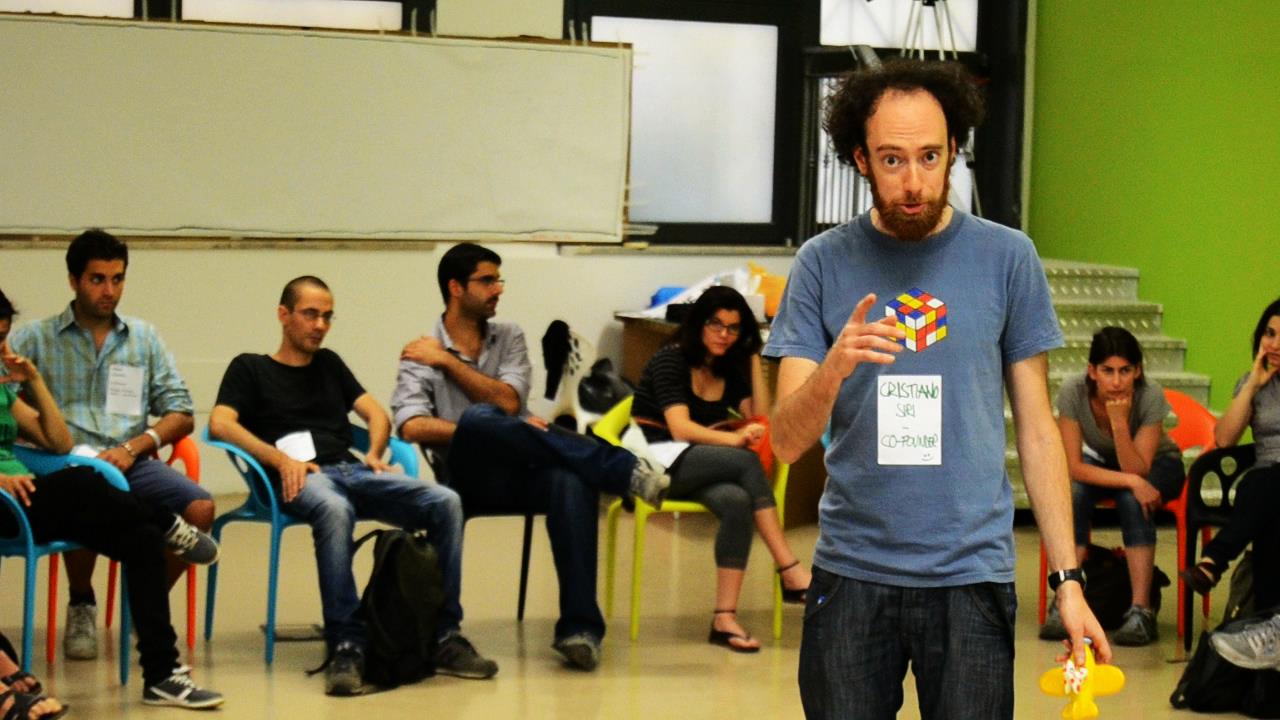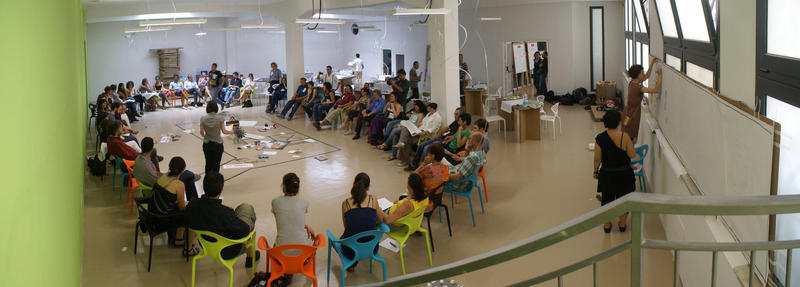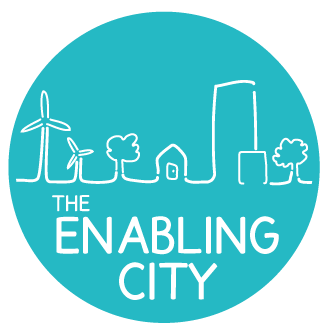by Hillete Warner
Global Innovators is a nine-part series that celebrates the remarkable work of social innovators from outside the English-speaking world. Twice a month, we will be profiling the stories of inspiring community pioneers from across three broad cultural clusters: change enthusiasts from Italy, France and the Spanish-speaking world. The series, inspired by the multilingual editions of the Enabling City toolkit, will focus on a rich variety of themes that explore 'enabling' frameworks for participatory social change.
“Open” and “participatory” are words that seem to have become almost synonymous with design lately. From open source software to co-creation, the process of collective brainstorming is stronger – and more inspiring – than ever. Yet one element that is often overlooked in the process of collaborative design, one that we don’t maybe think much about, is something essential to the process itself: “open” communication. Cultivating the art of effective communication requires a capacity to listen empathetically, a strong sense of emotional intelligence, an insatiable curiosity and, of course, a willingness to share.
The result is what is often called “collective intelligence,” the skilful blending of diverse insights and ideas into a coherent whole. So just like successful ‘open design’ is helping us make the shift from closed to open systems of production, learning what makes ‘open communication’ successful can help us shift the emphasis away from the celebration of individual insights to a creative process developed for and by the commons. For almost a decade, Cristiano Siri has been working to encourage just that. We spoke with him today to learn more about how he went from being a user experience designer to a participatory process facilitator, and what inspired him to investigate the path towards personal and community resilience along the way.
Enabling City: Cristiano, your work is known for bringing people together and bridging inter-sectoral divides. What are some of the formative experiences that have defined your work over the years?
Cristiano Siri: I first started as a user experience and service designer in Italy, and later decided to train as a participatory process facilitator in Italy and abroad. For the past ten years, I have practiced, taught and disseminated the art of listening, of co-creation, and community-building. These experiences are what compelled me to co-found The Hub Roma and to be a founding member of CoDesign Jam, an event format that organizes regular co-design gatherings (such as the Global Service Jam) here in Rome.
At the moment, however, my main project is finding my true ‘mission’ in life. In May 2013, my backpack and I will set out on a “mission finding” journey to explore places where people are prototyping new ways of living through resilience, relationship-building and inclusive community practices. I am inspired by job titles like: Transition Host, Transformation Doula, Community Gardener and Healer, Global Cross-Pollinator and Resilience Agent. I will visit eco-villages, intentional communities, transition towns and groups who are using different sharing economy models to learn from their stories and see how I can use the values of active listening in support of resilience-building.

EC: What motivated you to make the jump from being a user experience designer to becoming involved in co-design, co-working and the world of social innovation?
CS: I entered the “working world” fresh out of school and quickly realized that the workplace culture was encouraging us to pursue our tasks individually, that we were being separated into silos. Even in a creative environment, the value of listening to one another was missing. I wanted to do something to create a culture shift, to encourage the cross-pollination of skills, experiences and viewpoints so that they, in turn, could be applied to the emergence of eco-logical solutions. I found these engrained work habits to be stifling opportunities for co-working, so I created workshops to introduce co-design to as many stakeholders and team members as I possibly could. What emerged was an experience of deep engagement, one that gave way to new forms of collaboration and communication.
Then, in 2009, I met Dario Carrera and Ivan Fadini who invited me to join their team and open The Hub Roma with them. This was my first encounter with social innovation. Through my involvement with the project, I realized that the skills I had developed could be wonderfully employed to support a community of social innovators, people who are working to substitute negative externalities with long-term, positive ones.
EC: That must have been a rewarding, if challenging, transition. What have you learned from working with social innovators in Italy?
CS: In Italy, we are currently hearing the loud crackling sounds of a collapsing social, cultural and economic system. A large number of citizens are suffering from this collapse but, to this day, the institutions and the entrepreneurial system have failed to provide any tangible solutions to move the country forward. Luckily, citizens are leading the way by self-organizing and prototyping change through innovative social practices, showing us that change is indeed possible.
The practice of ‘social innovation’ is still new in the country, but I believe the strength of this community is precisely its ability to offer tangible, new ways to address old (but very real) needs. There is no support from formal institutions, and much remains to be done to network these co-design initiatives more broadly. The Hub Roma was established for precisely this purpose: to offer spaces and events that encourage encounters and networking while providing visibility to social innovators. We also use the space to explore relevant and common themes through public workshops, like our recent event series called "Money 4 Good" where we explored alternatives to the current financial model.
EC:As a seasoned facilitator, what are some of your favourite ways of bringing people together?
CS: To create positive change, I like to invite all stakeholders into the same room to facilitate the emergence of a shared view of the system they are in. This experience enables a shift in the participants' ways of thinking and acting so that, together, we begin to co-create and prototype solutions that have the collective long-term interest in mind. To do this, I use principles, methods, and tools from the Art of Hosting, Theory U, and Appreciative Inquiry. This is my favourite process design sequence:
- Listening practices (eg. Council Circle, Sensing Journeys, Open Space);
- Practices to collectively envision the system (eg. World Café, Multi Stakeholder Change Lab);
- Co-design and co-creation practices (eg. Design Jam);
- Prototyping practices.

EC: When blending these approaches, what are the values that guide your ‘open communication’ work?
CS: I will let my guiding values emerge from four quotes that I love:
Every leader is continually making an invitation, but often they are unaware of the invitation they are making. Some leadership is an invitation to shut up and some leadership is an invitation to speak up. We focus on the invitation it takes to get people to a conversation where they are willing to participate as fully as they can.
Mary Alice Arthur – Art of Hosting Steward
Not just any talk is conversation. Not any talk raises consciousness. Good conversation has an edge. It opens your eyes to something, it quickens your ears. And good conversation reverberates. It keeps on talking in your mind later in the day; the next day, you find yourself still conversing with what was said. The reverberation afterward is the very raising of consciousness. Your mind has been moved. You are at another level with your reflections.
James Hillman
Between stimulus and response there is a space. In that space is our power to choose our response. In our response lies our growth and our freedom.
Victor Frankl
And those who where seen dancing were thought to be insane by those who could not hear the music.
Friedrich Nietsche
EC: You mentioned the importance of bringing communities together and creating a system of mutual support. How can we encourage ‘networked’ co-design to thrive?
CS: To empower the emergence of a global community of change makers, I first like to focus on developing a process that supports, at the local level, the:
- Visibility of innovative local experiments and prototypes;
- Sharing of experiences (both successes and failures);
- Wisdom and capacity to adapt models to different contexts;
- Ability to listen to emerging signals, even when they are weak and local, to predict global changes in advance;
- Capacity for dialogue, and
- Connections that can be fostered between local initiatives and global institutional reform.
This dynamic is already developing and accelerating and I believe the most important factor, today, is that social innovators are aware they are no longer alone, that there is a multitude of them changing the rules of the game and giving birth to a new paradigm.
The rest will depend on how well we respond to the signals we hear when we actively listen to the world around us.
Find Cristiano on Twitter, or read his blog here. You can read more about The Hub Roma here, or visit the CoDesign Jam page to learn about upcoming events in Rome.









